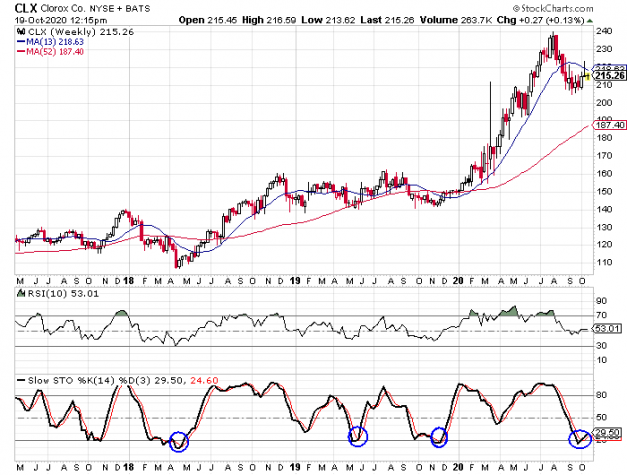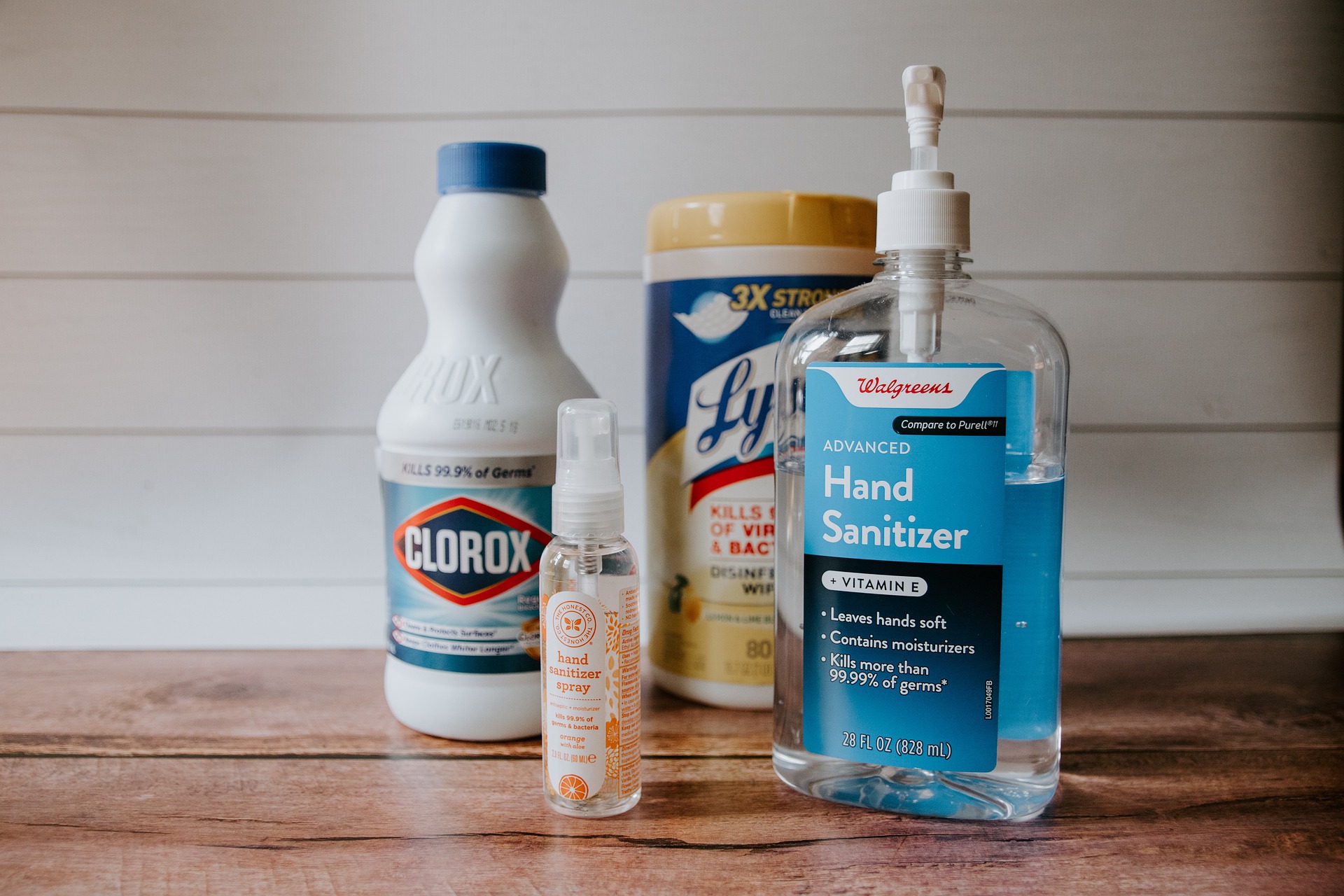We are in the middle of a global pandemic and one of the best weapons against the virus is cleaning surfaces with bleach. If we were to ask 100 people to name a company that makes bleach, I’m guessing at least 75% of the answers would be Clorox (CLX).
Given the scenario of the global health crisis along with the familiarity with Clorox, I couldn’t believe it when I was researching the company.
Two big sentiment indicators for Clorox show bearish sentiment — and from a contrarian viewpoint, this is a good thing.
First, there are 15 analysts covering the stock at this time with only three rating the stock as a “buy.” There are eight “hold” ratings and four “sell” ratings.
If we look at the ratings in terms of the buy ratings as a percentage of the total, the buy percentage for Clorox is only 20%. The buy percentage for the average stock runs in the 65% to 75%. What this suggests to me is that there is a much greater chance for upgrades than downgrades.
Secondly, the short interest ratio is at 10.1 currently and that is way higher than the average ratio. The average stock’s short interest ratio is in the 3.0 range.
The ratio is simply the number of shares sold short divided by the average daily trading volume.
For Clorox there are 13.89 million shares sold short at this time and the average trading volume is 1.375 million. When someone shares a stock short, they have to buy it to close the trade. If the stock rallies, short sellers will add buying pressure to a stock that is already climbing.
Using sentiment analysis with fundamental and technical analysis
One thing to remember about sentiment analysis and contrarian investing is that you want bearish sentiment on good companies. Sometimes bearish sentiment is warranted and it is usually because the company has poor fundamentals and the stock is trending lower. But that isn’t the case at all for Clorox.
Clorox has good fundamental indicators already and they are getting better as the demand for the company’s products increases.
Earnings jumped by 28% in the most recent quarter and revenue increased by 22% during the same period. The company has a great return on equity at 128% and the profit margin is at 17.6%.
Looking at the weekly chart we see that the stock rallied sharply from last November through August. The stock pulled back a little from the beginning of August through the beginning of October, but that brought the stock out of overbought territory.

If we look at the weekly stochastic readings, they moved from overbought territory down to oversold territory during the recent pullback. Now the indicators have made a bullish crossover as the stock has stabilized and appears ready to move higher again.
I circled the three previous instances where the indicators were in oversold territory and made a bullish crossover. At the end of April ’18 the indicators made a bullish crossover and the stock gained 38% in the next five months.
In May ’19 we saw another crossover and this time the stock gained around 15% in just two months. The indicators made another bullish crossover last November and the stock gained 42% over the next five months.
To maximize the bullish move that I’m expecting, I think the April 2021, 200-strike calls make the most sense. Those options are currently priced at $24.80, or $2,480 for each contract. The stock is currently trading at $214.69, so 100 shares would cost you $21,469.
If the stock makes a small, 15% move like we saw in the second quarter of 2019, the stock would be trading somewhere around $235 and the options would be worth $35. This would be a decent gain of 41% for investors.
However, if the stock makes a 40% move like it did in the other two instances the stock would be trading over $285. The options would be worth at least $85 in this case and the percentage gain would be over 240%.


